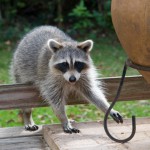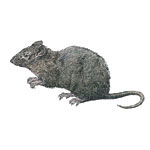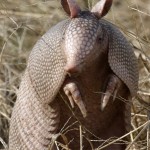READY TO GET STARTED?
REQUEST A FREE ESTIMATE
Fill out the form below or call (888) 466-7849 for a free, no-obligation estimate.
If you’ve read this blog before then you know that prevention is key. Whether talking about ants, termites, mice, or other pests and rodents, prevention is always the first step. Taking the proper steps to prevent these creatures from entering your home is the key to eliminating pest and rodent problems.
According to the Center for Disease Control and Prevention, rodents, such as rats and mice, spread over 35 diseases. Their diseases are spread through contamination by urine, feces, saliva, or bites.
So what are the proper steps to getting rid of rodents in your home?
First, is a thorough inspection of your home by a licensed professional who is knowledgeable about wildlife removal. Northwest Exterminating’s wildlife team specializes in the exclusion, removal, and control of rodents and wildlife. The wildlife team will inspect your property for any current infestations and points of entry. After that, they will work with you to customize a plan to get rid of any current rodents and the necessary steps to prevent future rodent infestations.
Second, is trapping the rodent. After your rodent control specialist has inspected your property and identified the infestation they will place traps or bait in the areas where the rodents will most likely travel.
Third, after rodents have been trapped and controlled, the wildlife team will work with you to take the necessary steps to prevent future rats and mice from returning. Proper prevention can include but is not limited to sealing cracks, blocking off entry points, eliminating food sources, and cutting back tree limbs from the roofline.
Lastly, it is very important that after the rodents have been properly trapped and out of your home that the area is carefully cleaned to avoid the spread of disease. Droppings and urine should be cleaned immediately, any nests should be removed, damaged wires repaired, and contaminated insulation should be replaced.
For more questions on rodent or wildlife control please call 888-466-7849 or visit us at www.callnorthwest.com
 According to a recent article by the Wall Street Journal, wildlife damage to crops, landscaping and infrastructure now exceeds $28 billion a year. The article addresses the benefits to the increase in wildlife but also the damage they can cause and the effect it has on our local economies.
According to a recent article by the Wall Street Journal, wildlife damage to crops, landscaping and infrastructure now exceeds $28 billion a year. The article addresses the benefits to the increase in wildlife but also the damage they can cause and the effect it has on our local economies.
This year, Princeton, N.J., has hired sharpshooters to cull 250 deer from the town’s herd of 550 over the winter. The cost: $58,700. Columbia, S.C., is spending $1 million to rid its drainage systems of beavers and their dams. The 2009 “miracle on the Hudson,” when US Airways flight 1549 had to make an emergency landing after its engines ingested Canada geese, saved 155 passengers and crew, but the $60 million A320 Airbus was a complete loss. In the U.S., the total cost of wildlife damage to crops, landscaping and infrastructure now exceeds $28 billion a year ($1.5 billion from deer-vehicle crashes alone), according to Michael Conover of Utah State University, who monitors conflicts between people and wildlife.
Click here to read the whole article.
For wildlife removal or exclusion needs in your home or business, call Northwest. A Wildlife Control representative will inspect your property for evidence of wildlife and will determine the points of entry being used by these critters to get into your structure. A customized plan will be developed to get the immediate nuisance under control and to seal off any known points of entry.
Source: http://online.wsj.com/article/SB10001424052970204846304578090753716856728.html#
 Did you know that the Norway rat is the largest commensal (def’n: living with, on, or in another, without injury to either) rodent in the US?
Did you know that the Norway rat is the largest commensal (def’n: living with, on, or in another, without injury to either) rodent in the US?
Norway rats enter homes in the fall when food sources outside of a structure are scarce.
Identification
Environment
Threats
Treatment
For rat control or other animal removal services, call Northwest Exterminating. Our Wildlife Control and Animal Removal Services team will inspect your home and property for signs of wildlife and points of entry. We specialize in the exclusion, removal, and control of wildlife nuisances.
 Out of the 20 known species of armadillo, only the nine-banded armadillo has strayed out of Latin America. During the 1880s, the animal appeared in Texas and has been pioneering into new dwellings ever since. Lately, the nine-banded armadillo has actually rooted itself as far east as Georgia & South Carolina and as far west as Illinois. The animals are occasionally noticed in Indiana and Iowa. A few researchers have proposed that escalating temperatures because of weather change might be permitting armadillos to expand toward further habitats.
Out of the 20 known species of armadillo, only the nine-banded armadillo has strayed out of Latin America. During the 1880s, the animal appeared in Texas and has been pioneering into new dwellings ever since. Lately, the nine-banded armadillo has actually rooted itself as far east as Georgia & South Carolina and as far west as Illinois. The animals are occasionally noticed in Indiana and Iowa. A few researchers have proposed that escalating temperatures because of weather change might be permitting armadillos to expand toward further habitats.
The gluttonous critters can create their homes in woodlands, grasslands, and even suburbs. Furthermore, fruitful females start breeding at barely one year old and can have litters of four babies every year. An armadillo’s dense frame is uncomplicatedly modified skin that acts as one approach that this abnormal animal shields itself. When an armadillo encounters a threat, it commonly dashes, digs, and bears down in the ground to stop them from being turned over. The three banded armadillo is the only species that can roll up into a ball for its own safety and its teardrop-shaped head plate fuses the gap so there are no cracks in the protective covering. Domestic dogs, wild cats, birds of prey, and humans are just a few of the threats to armadillos.
Our Wildlife Services Team specializes in the exclusion, removal, and control of wildlife nuisances. So if you see see or hear the scurrying of an armadillo, or another unwelcomed creature, our Wildlife Services Team can assist you in getting rid of the wildlife in your home! Call the Mouse! 888-466-7849
Now that you know a little more about Armadillos, do you think this armored animal is cool or creepy?
Cara Carver
[email protected]